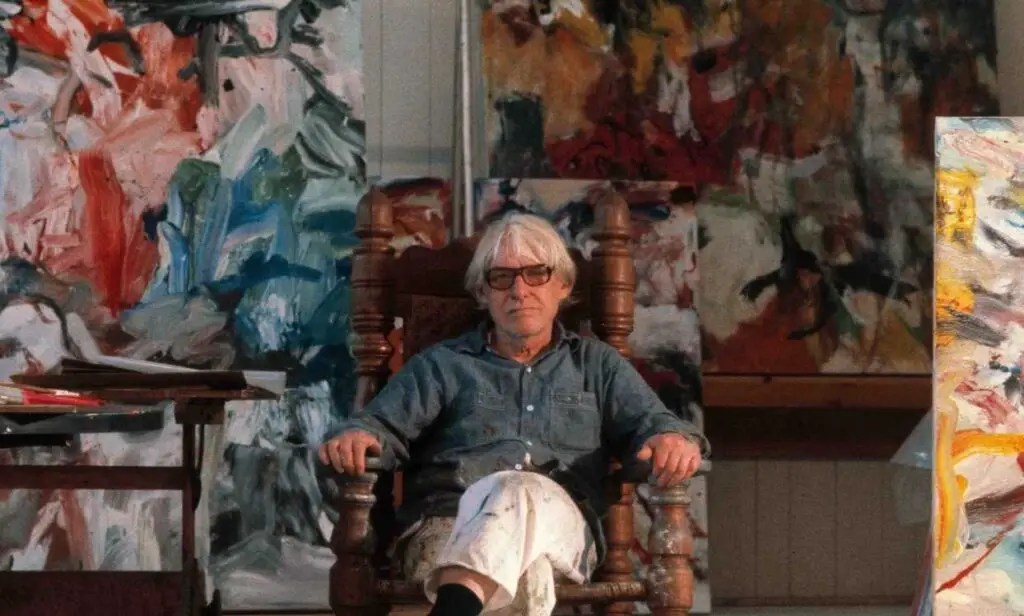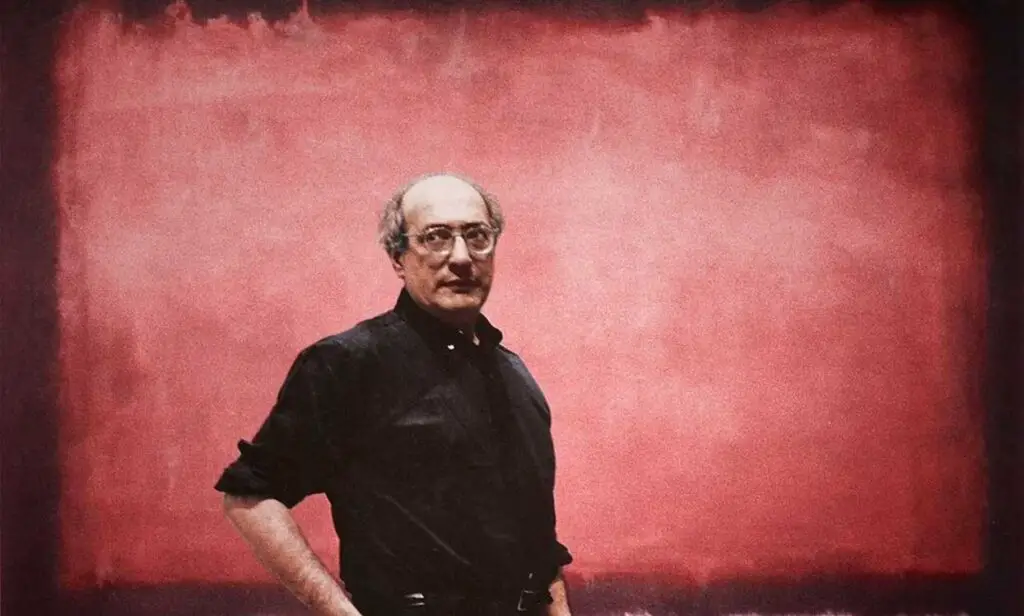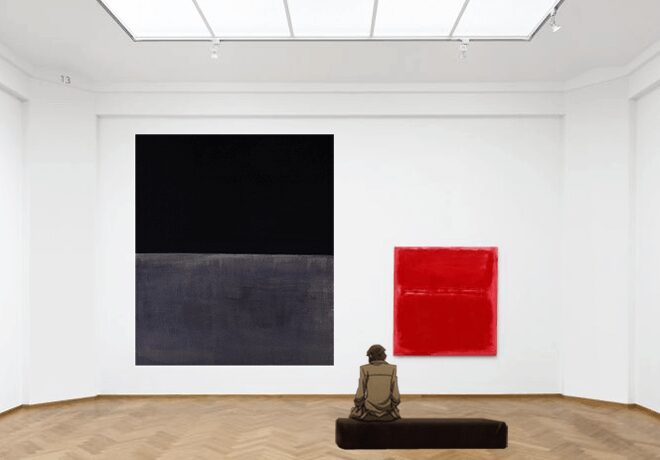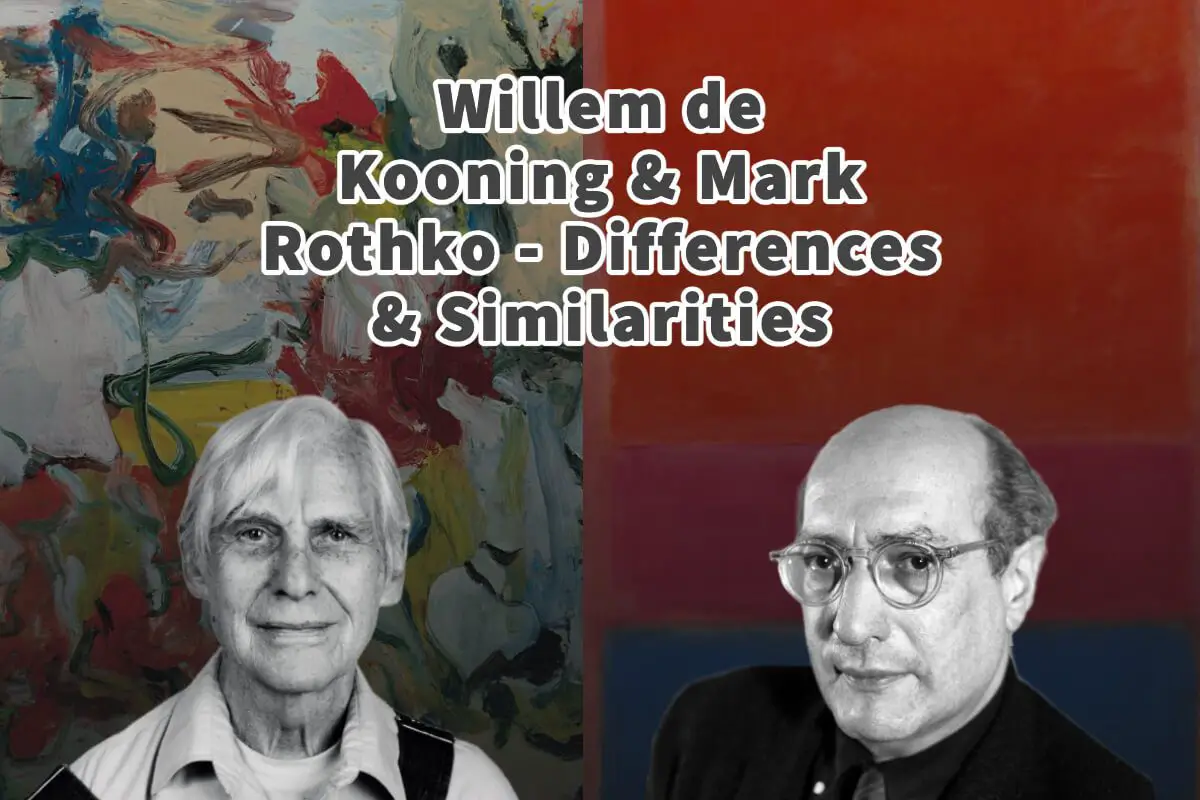Willem de Kooning and Mark Rothko are two great American artists. They are both Abstract Expressionism artists.
Mart Rothko and Willem de Kooning are essential abstract expressionism art movement artists. Even though they were in the same art movement, their art is quite different, yet it has some similarities. They used color and layering in their work and saw how they executed it as an essential aspect of their paintings.
Table of Contents
- Contrasting and Comparing Willem de Kooning & Mark Rothko: A Study in Abstract Expressionism
- Frequently Asked Questions
- Related Questions
Contrasting and Comparing Willem de Kooning & Mark Rothko: A Study in Abstract Expressionism
Willem de Kooning and Mark Rothko are towering figures in the American art scene, renowned for their influential roles in the Abstract Expressionism movement. Despite their shared affiliation with this avant-garde art movement, the nuances of their individual styles reveal both striking differences and intriguing similarities.
Both artists were masters of color and layering, considering the execution of these elements as fundamental to the essence of their paintings. While rooted in the same artistic movement, their works unfold distinct narratives and approaches, reflecting their unique perspectives and contributions to the world of Abstract Expressionism.
Willem de Kooning And Mark Rothko Are both Abstract Expressionism Painters
William de Kooning and Mark Rothko are abstract expressionism painters, considered leaders of the Abstract Expressionism movement in New York City in the 1940s and 50s.
Abstract expressionism is a term that applies to a new form of abstract art that American painters developed, such as Jackson Pollock, Mark Rothko, and Willem de Kooning. One of the main aspects of abstract expressionism is using gestural brushstrokes, mark-making, and impressionism of spontaneity.
Mark Rothko always said he was not part of any school, even though most scholars put him as a leader of the New York School of Color field of painting in Abstract Expressionism. Mark Rothko was known to say:
“I’m not an abstractionist… I’m not interested in relationships of colour or form or anything else.”
Mark Rothko
Mark Rothko And Willem de Kooning – Two Different Groups Within Abstract Expressionism
Even though Mark Rothko never considered himself an Abstract Expressionist, he is considered a leader in this movement.
Mark Rothko and Willem de Kooning are abstract expressionism painters within two different types of groups that make up abstract expressionism. Here are their other groups explained:

- Willem de Kooning An Action Painter – Willem de Kooning is considered an Action Painter within Abstract Expressionism. He would work with large brushes and make sweeping gestural marks on the canvas.

- Mark Rothko An Color Fields Painter – Mark Rothko is considered a color field painter within the Abstract Expressionism movement. He was interested in religion and myth and created simple compositions with large areas of color for meditative painting.
Color And Layer Were Important To Both Willem de Kooning And Mark Rothko
The color and color layering was essential to both De Kooning and Rothko. Both of them used color in their paintings to express what they wanted to express.
They both layered their paintings and would put on colors, including layers upon layers. How they would use and apply the color and do the layers would be very different.
Differences In Color And Layering of Mark Rothko And Willem De Kooning
How Rothko and De Kooning used color and layers was very different.

When you look at Mark Rothko’s paintings, he used a lot of rectangles or almost square boxes with layers of color. Most of his paintings are predominantly dominated by a few color choices.

De Kooning’s artwork usually has many colors on the canvas that have been applied repeatedly. He was known to scrape off the paint and start over again if he didn’t like something or wanted to change something. He also learned how to put things into the paint, such as sand or even pebbles, to give the paint more texture.
Mark Rothko and Willem de Kooning’s Artistic Subject Matter Explained
Mark Rothko and Willem de Kooning saw their subject matter as completely different. They both saw their paintings as a kind of experience.
For Mark Rothko, the experience took on a kind of spiritual nature. He was known to say:
“ An painting is not about an experience, it is an experience.”
Mark Rothko
For Mark Rothko, it was not about the subject matter or color; he saw his paintings as a way to move people emotionally. He wanted to see that his paintings evoked some personal emotions in us when we saw them that we did not just see them as blocks of color.
He was known to refuse to sell a canvas to someone if he felt they did not react the way they wanted them to react to his paintings. For him, the emotions expressed in that painting were important, not just the color, paint, or even the painting technique.
Willem de Kooning was known to use the female form as his inspiration in his work, but even that he knew could be up to interruption. Many of his paintings of the female form had been named Women 1 or Woman in Landscape. He is also known to paint or be inspired by urban landscapes.
Willem de Kooning said this about his paintings:
“I think I am painting a picture of two women but it may turn out to be a landscape.”
Willem de Kooning
Like Mark Rothko, for Willem de Kooning, it was not the subject matter as much as the process and experience for the painting. It was about the experience of how people would see the paintings, their emotions, and experiences in viewing the works of art.
Both Came From Europe But Lived Different Lives
Both Mark Rothko and Willem de Kooning came from Europe. Mark Rothko came from Russia to the United States, and Willem de Kooning came from Holland.
Mark Rothko was known to suffer from depression, and in February 1970, he took his own life in his studio in New York City. At the time, he and his wife were separated; they had two children, a daughter and a son.

He left no suicide note, so many feel some of his paintings, particularly his Untitled 1970, a red blood color, and grey and black series, were a kind of suicide note. He also left a mess of his estate and paintings, drawing out court cases. Eventually, his children won the case.
Willem de Kooning also lived in New York but later moved to the East Hamptons, where he had a studio and home. He was married once but had many affairs with many women. He did have a daughter, Lisa.
Throughout his life, he suffered from severe bouts of alcoholism and also dealt with depression.
Willem de Kooning lived to be 92, but for a large part of his older years, he could not paint as he had Alzheimer’s disease.
Willem de Kooning did have a very interesting relationship with the songwriter and singer of the Beatles, Paul McCartney. You can read more about our blog about Paul McCartney And Willem de Kooning’s Relationship And Art by clicking here.
Anita Louise Art is dedicated to art education, great artists, and inspiring others to find and create their art. We love art that uplifts and inspires. #ArtToMakeYouSmile! #ArtToMakeYouHappy!
If you want to see any of my art, you can find out more by clicking here. If you are interested in what inspires me and my paintings, you can discover more by clicking here.
We have a free newsletter and would love you to be part of our community; you can subscribe to the newsletter by clicking here. I would be happy to talk to you if you have any questions. You can reach me, Anita, by clicking here.
Subscribe to our Anita Louise Art YouTube Channel with great videos and information by clicking here.
Join us for our podcast “5 Minutes With Art.” Spend just 5 minutes a week with us to discover and learn about great art and artists. You can find out more about our podcast by clicking here.
Frequently Asked Questions
How would you describe the artistic style of Willem de Kooning and Mark Rothko?
Both Willem de Kooning and Mark Rothko were prominent figures in Abstract Expressionism. De Kooning’s style is characterized by dynamic brushwork and figurative elements, while Rothko’s work is known for its large color fields and emotional intensity.
What are the key differences in the use of color between de Kooning and Rothko?
De Kooning often used a vibrant and varied color palette in his abstract compositions, incorporating bold contrasts. In contrast, Rothko focused on the emotional impact of color through simplified, large color blocks, creating a contemplative atmosphere.
Did Willem de Kooning and Mark Rothko share any common artistic themes despite their different styles?
Yes, both artists shared an interest in exploring the emotional and psychological aspects of their art. Despite the visual disparities, their works often convey a sense of introspection and depth.
How did Willem de Kooning approach composition compared to Mark Rothko?
De Kooning’s compositions were often dynamic and layered, featuring intricate brushwork and spatial complexity. Rothko, on the other hand, employed simpler compositions, focusing on the interaction of color to evoke emotion.
Were there any specific influences that shaped Willem de Kooning and Mark Rothko’s artistic careers?
De Kooning was influenced by Cubism and Surrealism, incorporating aspects of these movements into his work. Rothko was influenced by mythology and philosophy, contributing to the metaphysical nature of his paintings.
How did the two artists differ in their approach to abstraction within the Abstract Expressionist movement?
De Kooning’s abstraction often retained elements of the human form and gestural brushstrokes, reflecting a more tangible connection to reality. Rothko’s abstraction, in contrast, aimed at pure emotion and contemplation, minimizing representational elements.
Can you elaborate on the role of layering in Willem de Kooning’s art compared to Mark Rothko’s?
De Kooning utilized intricate layering to build texture and depth in his paintings, creating a sense of movement. Rothko’s layering was more about the interaction of color planes, contributing to the atmospheric and immersive quality of his work.
Were there any notable exhibitions or moments in art history that featured both Willem de Kooning and Mark Rothko’s works together?
While there may not be specific exhibitions featuring both artists exclusively, their works have often been showcased in retrospectives and exhibitions highlighting the diversity within the Abstract Expressionist movement.
How did the cultural and social context of their time influence the art of Willem de Kooning and Mark Rothko?
Both artists were active during a period of significant cultural and social change, and their works often reflected the complexity and uncertainty of the post-World War II era in the United States.
Can you summarize the legacy of Willem de Kooning and Mark Rothko in the world of abstract art?
De Kooning and Rothko left a lasting impact on abstract art, each contributing unique perspectives to the Abstract Expressionist movement. Their works continue to be studied and appreciated for their innovation, emotional resonance, and influence on subsequent generations of artists.
Related Questions
Why Are Mark Rothko’s Paintings Considered Special?
Mark Rothko’s paintings are remarkable because they are original works of art. He is one of the founders of the abstract expressionism movement and color field painting. But more than that, he believed that his spirit lives within the art and that we, the individuals, ca we view his art, can be taken to a different realm.
By clicking here, you can learn more by reading Why Are Mark Rothko’s Paintings Considered Special?.
Who is the American Artist Jackson Pollock (1912-1956)?
Jackson Pollock is considered by some to be one of the most brilliant American abstract artists that ever lived. Others consider his work of art as tossing around cans of paint by an artistic madman. One thing for certain is that Jackson Pollock is an important American abstract artist.
You can learn more by reading the blog Who is the American Artist Jackson Pollock (1912-1956)? by clicking here.
Who Was The Western American Artist Minerva Teichert (1888-1976)?
Minerva Teichert was, by all accounts, a cowgirl from Idaho who loved art. She studied art in both Chicago and New York. Minerva is known for her artwork of daily life in the western United States, historical events, and scenes from the scriptures.
You can read more by reading our blog Who Was The Western American Artist Minerva Teichert (1888-1976)? by clicking here.


